
Dredge Boat Photos
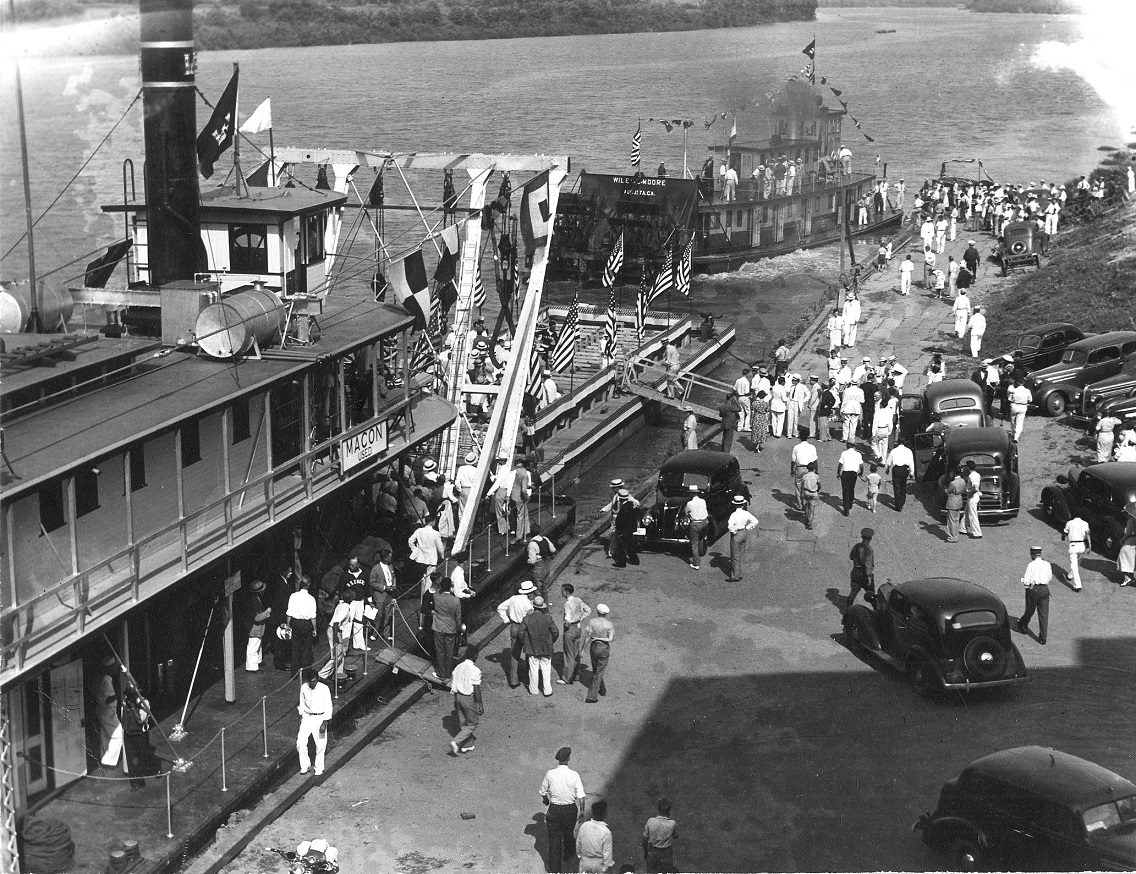
Attached was apparently taken during the 1930's sometime at Savannah or Augusta, Georgia on the Savannah River.
The dredge MACON is on left, the little sternwheeler WILEY L. MOORE, Port of Augusta is on the right.
Looks like a ceremony was about to take place on the barge attached to the front of the MACON since there are American flags displayed.
Suppose this could have been on the 4th of July or the launching of the MACON which looks just about brand new and folks are visiting on board.
Lots of gents dressed in white, must've been summer time. There are not too many ladies or children visible.
Some discoloration upper left and upper right suggests the negative suffered some chemical damage in processing before it was printed.
Perhaps some folks who live in Savannah or Augusta could shed some light on exactly where, when and what was going on in this picture.
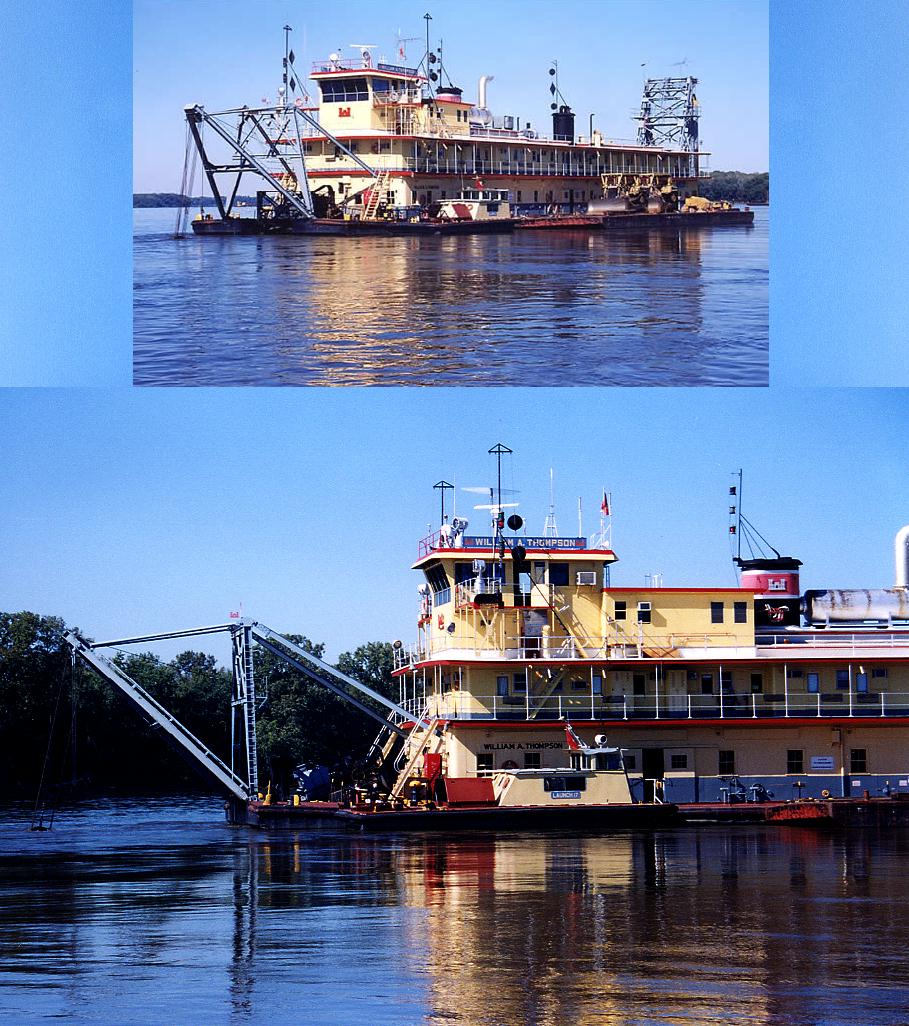
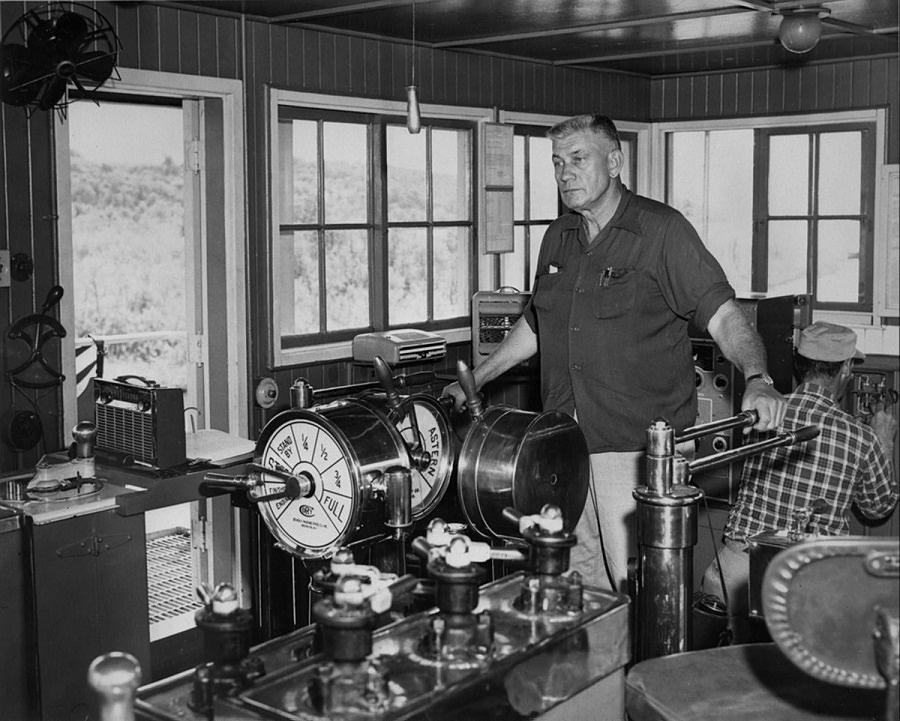
The Dredge William A. Thompson
Since 1937, the Corps of Engineers Dredge William A. Thompson kept the Mississippi River navigable by maintaining channel widths and depths.
This large vessel measures 267 feet in length, was operated by nearly 70 crew members, and was originally propelled by 650 HP engines.
As the last of its kind, the Dredge Thompson was decommissioned when new machinery was brought in as a replacement in 2006.
developmentplanning.net
In Sept 2002 after the voyage on the towboat PATRICIA GAIL from Cape Girardeau, MO to Memphis, TENN, I drove upriver to Hannibal, MO and the riverside home at "Scipio" of Curt Lees and Ann Sundermeyer who had accompanied me on the trip.
Curt took me out on his pontoon boat while I was there so I could take photos of the dredge WM. A. THOMPSON at work in the Mississippi near Turtle Island which you've seen in other photos I've sent of this part of the river. It was a miraculous clear day with great sunshine on the boat and beautiful reflecting water. History and current status of the THOMPSON below
The Dredge William A. Thompson arrived in Prairie du Chien on June 13, 2012, and is currently moored in the backwaters of the Mississippi near the Prairie du Chien Marina. Boaters and passersby—as well as those who greeted the vessel upon its arrival—have probably noticed its imposing size and distinctive shape: 267 feet long with the cutter head projecting from the bow and two spud towers rising from the stern. Community Development Alternatives of Prairie du Chien acquired the Dredge in the spring of 2012 from the Corps of Engineers, which desired to find a community willing to receive the vessel and preserve its rich history of service on the Upper Mississippi River. CDA is currently developing plans to convert the Dredge into a Museum of River Transportation.
The Dredge William A. Thompson is a wrought iron hull, self-propelled, cutter head suction dredge fabricated in 1936 by the Dravo Company of Pittsburgh,Pennsylvania for the U.S. Army Corps of Engineers (Corps), St. Paul District. The largest and only remaining example of its type used by the Corps, the Thompson was generally considered the best of the fleet and served as a basis for future design of large cutter head dredges. The Thompson holds a distinguished place in the evolution of marine dredge craft. The Thompson is the most original of two cutter head vessels built for the Corps that incorporated self-propulsion via diesel and electric engine systems, on-board crew quarters, and dredge mechanism on a scale not achieved since (McCroskey 5).
The Dredge will tell the story of its role in transforming the Upper Mississippi River into a transportation artery, opening the doors for Midwest agribusiness to national and world markets. The museum itself will be a unique integration of political, social, and environmental history, featuring one of the few and best-preserved dredge artifacts in the United States. No other restored dredge can claim the Thompson's singular place at the intersection of two historical movements: the effort to establish a nine-foot channel on the Upper Mississippi to expand national commerce beyond the rail system; and the technological advancements necessary to develop the machinery to accomplish the task.
Once the Dredge is permanently set in its final location, it is envisioned that an access structure would be constructed to provide the public access to the main deck and upper decks. Upon boarding the Thompson, visitors will be greeted by a fully-preserved cutter suction dredge. The four interpretive strategies as determined by a team of academic scholars—Upstairs/ Downstairs (social theme), The Machine, The National Story, and The River—will be accomplished in separate sections of the vessel that comprise different components of the overall Museum tour.
Prairie du Chien offers a fitting location for the Thompson. More than 100 years before the signing of the Declaration of Independence, two Frenchmen with five other voyageurs entered the Mississippi River at the mouth of the Wisconsin River. Father Marquette and Joliet laid eyes on what is now Prairie du Chien on June 17, 1673. By 1685, another Frenchman—Nicolas Perrot—built trading posts or forts at various locations, one at the southern limits of Prairie du Chien. River traffic was the only practical means of transportation for personal goods, and Prairie du Chien was strategically located for this purpose. In 1823, the first steamboat to navigate the upper Mississippi River, named 'Virginia,' arrived on the Riverfront in Prairie du Chien. With the arrival in 1857 of the first rail line connecting Lake Michigan with the Mississippi River, Prairie du Chien soon became a transportation hub—where land, rail, and river transportation came together.

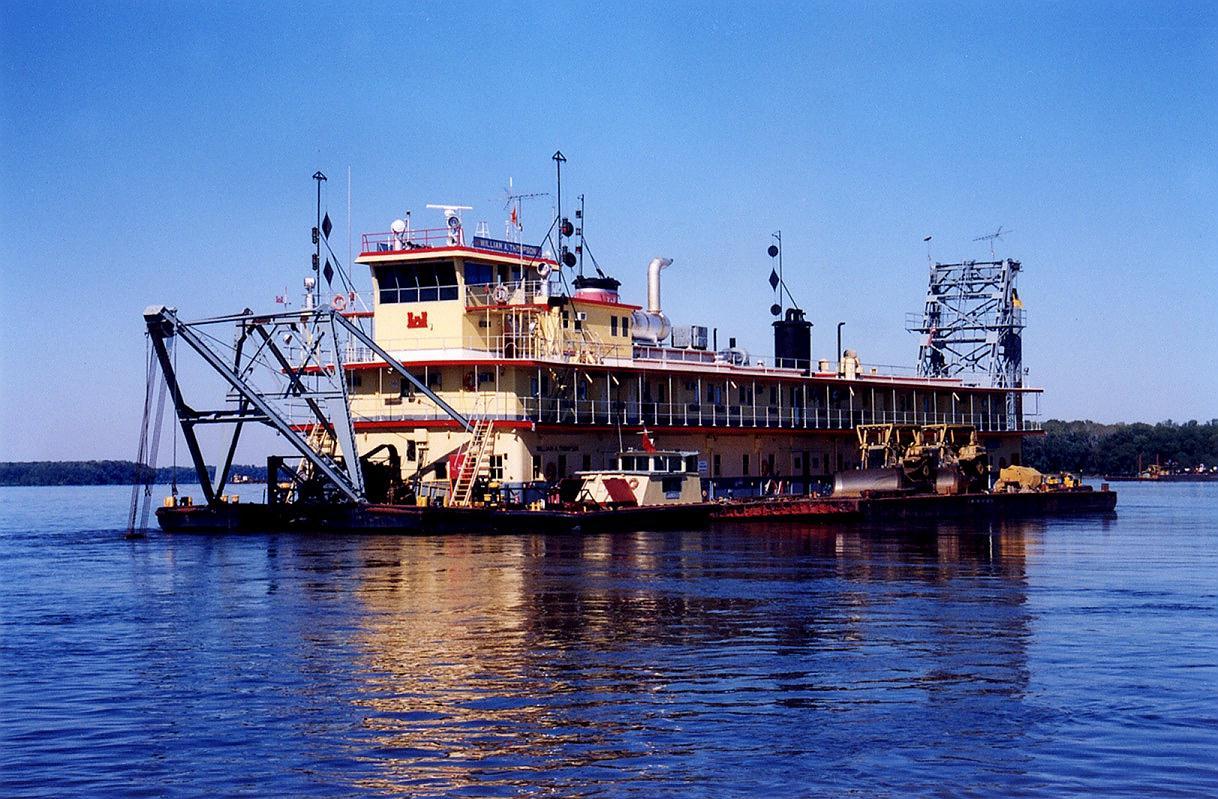
MAN IN A MINNESOTA MUSEUM WINDOW 2007
Attached photo I found on a 2007 compact flash card of yours truly at the maritime art museum in Winona on the Mississippi River.
When I pulled into the parking lot I saw a bunch of banners suspended from the street lamps with a photograph I took of the dredge WM. A. THOMPSON that the Museum was supposed to obtain and place it on exhibition at the shoreline of the river below the Museum. Later on another community got the dredge instead.
MINNESOTA MARINE ART MUSEUM
800 RIVERVIEW DRIVE
WINONA, MINNESOTA 55987
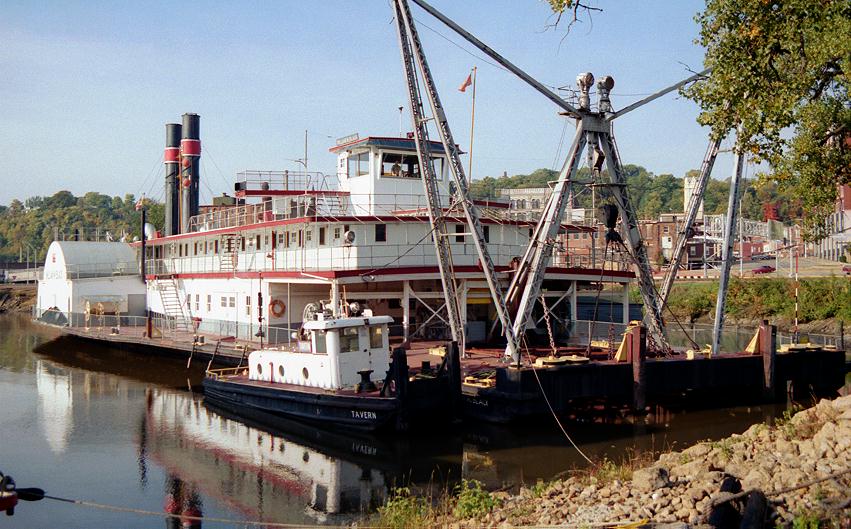
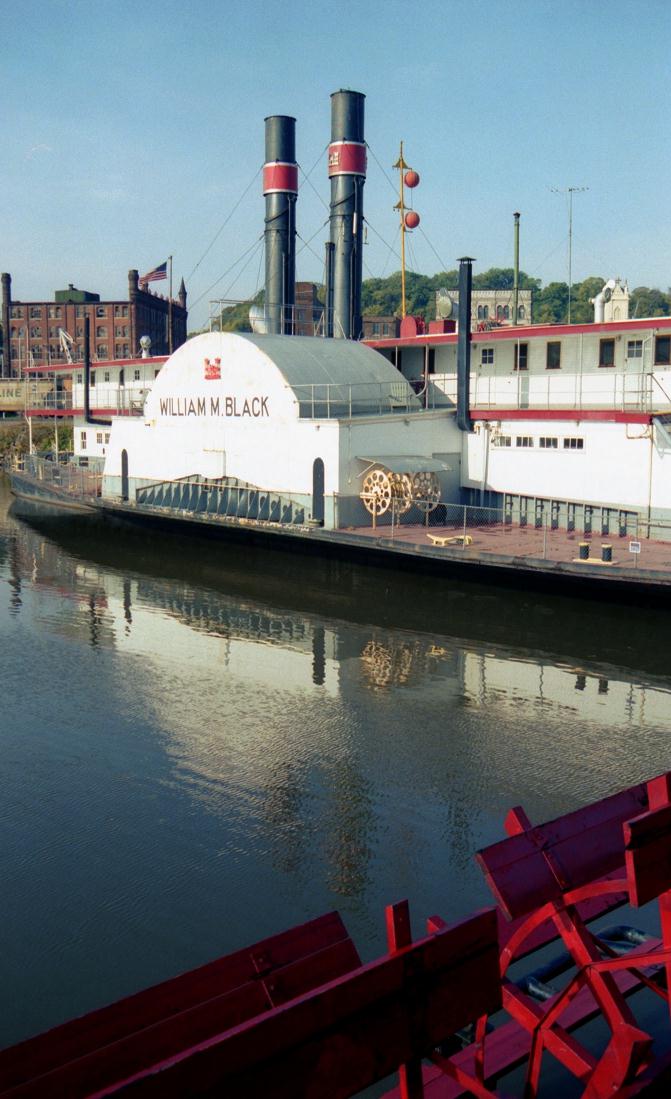
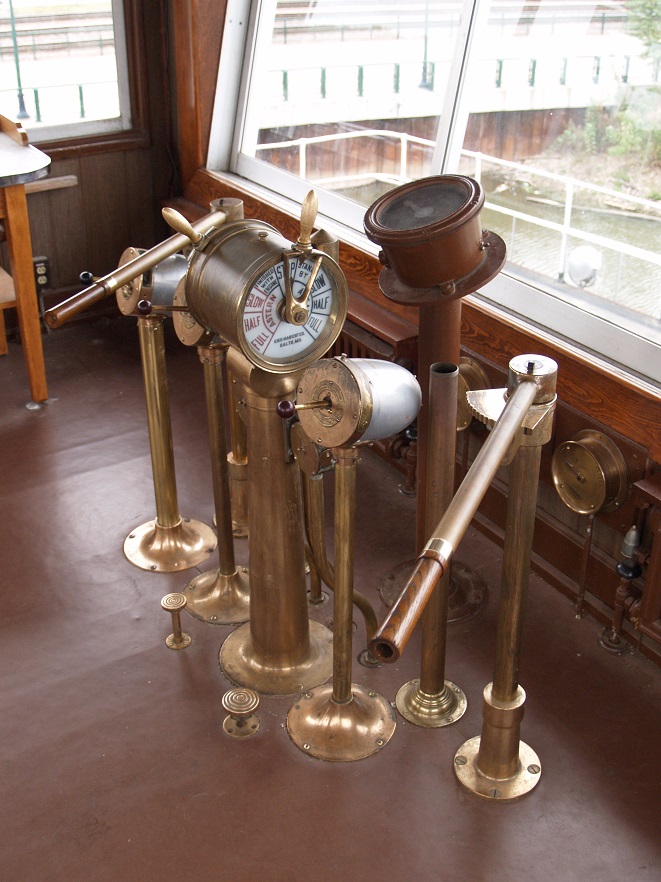
Three of the photos I took of the historic 1934 Dredge WM. M. BLACK at Dubuque, Iowa. It's an impressive and large steamboat, that shares some characteristics with the sidewheel passenger boats of ye olden days.
The location of the stacks lined up behind each other between the paddlewheels is distinctive to at least one other Corps of Engineers dredge, the WM. S. MITCHELL which looked like a "sister ship" to the BLACK. Illustrators of foreign editions of Mark Twain's books sometimes copy this configuration rather than depicting the stacks to the port and starboard sides of the deck ahead of the pilot house.
The boat's history abridged below from City of Dubuque site.
William M. Black
cityofdubuque.org
The dredge William M. Black, moored in the Ice Harbor, is one of the last steamboats built with the advance technology of the 1930s, the last era before diesel power replaced steam. A side-wheeler steamboat, the Black is similar in form and style to the great steam boats of the 19th century and thus constitutes a link with the most colorful period of river transportation.
This vessel, which is 277 feet long and 85 feet wide, was built in 1934 by the Marietta Manufacturing Company in Point Pleasant, West Virginia for the U.S. Army Corps of Engineers.
The Black's metal hull and main deck have superstructures of the same material while the upper deck and pilot house are constructed entirely of wood.
The main deck contains a machine shop, two boilers feature two large metal smokestacks bearing Corps of Engineers insignia, two paddle wheel areas, and the dredge pump engine.
The paddle wheels are 25 feet in diameter, weigh 32 tons each, and are powered by 600 horsepower reciprocating steam engines. The dredge pump has a 1,300 horsepower triple expansion steam engine.
There are several living quarters for the crew, storerooms, a drying room, a food preparation area and separate crew and officer's mess, and fourteen staterooms including captain's and engineer's quarters.
The dredge William M. Black is an important link in the chain of work performed by the U.S. Army Corps of Engineers on the Mississippi, Missouri, and other western rivers.
The Black was one of the last steam powered vessels used by the Corps of Engineers in its vital river work and thus constitutes a final chapter in the history of a colorful era in river traffic.
The Corps utilized this boat from 1934 to 1973 and used it to open navigation channels, excavate pilot channels and boat harbors, and to pump earth fills.
Burning up to 7,000 gallons of oil daily, the Black was capable of dredging 80,000 cubic yards of material per day.
When operating at full capacity, this steamboat carried a crew of 49 but had sleeping accommodations for up to 63 persons.
Location: Ice Harbor: National Mississippi River Museum & Aquarium
Year Constructed: 1934
Builder: Marietta Manufacturing Company, Point Pleasant, West Virginia
Style: Side-Wheel Dredge
Date listed on National Register of Historic Places:April 12, 1982
Date listed as a National Historic Landmark: April 27, 1992

With the exception of images credited to public institutions,
everything on this page is from a private collection.
Please contact Steamboats.com for permission for commercial use.*
All captions provided by Dave Thomson, Steamboats.com primary contributor and historian.
